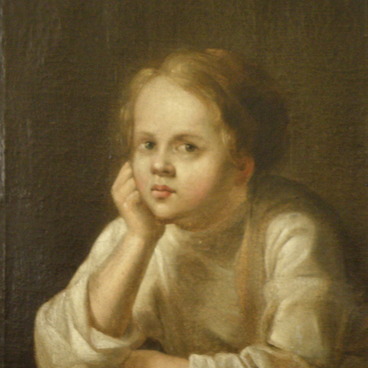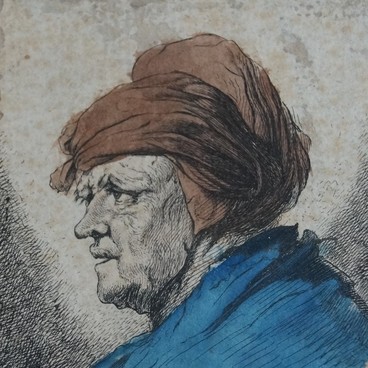“The Mother”s Portrait” from the collection of the Arzamas Art Museum is the work of painter Ivan Sveshnikov.
The future artist was born in 1805 into a family of Arzamas burghers. The art of painting interested him since childhood because his father was also an artist. Later, Sveshnikov the Younger attended classes in the Alexander Stupin’s School. In the student register of August 7, 1839, Sveshnikov is named among the students of the second subdivision, and in the register of 1845, Stupin marked him as a student who ‘distinguished himself in all aspects’. Then Sveshnikov went to St. Petersburg where he was accepted in the Imperial Academy of Arts and soon awarded the title of a portrait painter. Subsequently, the artist returned to Arzamas and opened his own art studio.
The Arts School in Arzamas was established in 1802 by Alexander Stupin. In the early 19th century it became the very first educational institution for aspiring artists in Russia’s provinces. Art historian Pyotr Kornilov described the school as “the only source of artistic knowledge spreading among talented Russian serfs”. The school was a rare case of an academic education model implemented in conditions of a provincial town. Stupin’s initiative facilitated further dissemination of professional artistic knowledge and skills in provinces. The works of many Arzamas School graduates represent a significant contribution to the development of the Russian art in the first half to the mid-20th century. The School alumni included such renowned painters as Vasily Perov, Yevgraf Krendovsky, Ivan Zaitsev, Vasily Rayev and other successful painters. Later, they all participated in the formation of the Itinerant Art Exhibition Partnership.
The future artist was born in 1805 into a family of Arzamas burghers. The art of painting interested him since childhood because his father was also an artist. Later, Sveshnikov the Younger attended classes in the Alexander Stupin’s School. In the student register of August 7, 1839, Sveshnikov is named among the students of the second subdivision, and in the register of 1845, Stupin marked him as a student who ‘distinguished himself in all aspects’. Then Sveshnikov went to St. Petersburg where he was accepted in the Imperial Academy of Arts and soon awarded the title of a portrait painter. Subsequently, the artist returned to Arzamas and opened his own art studio.
The Arts School in Arzamas was established in 1802 by Alexander Stupin. In the early 19th century it became the very first educational institution for aspiring artists in Russia’s provinces. Art historian Pyotr Kornilov described the school as “the only source of artistic knowledge spreading among talented Russian serfs”. The school was a rare case of an academic education model implemented in conditions of a provincial town. Stupin’s initiative facilitated further dissemination of professional artistic knowledge and skills in provinces. The works of many Arzamas School graduates represent a significant contribution to the development of the Russian art in the first half to the mid-20th century. The School alumni included such renowned painters as Vasily Perov, Yevgraf Krendovsky, Ivan Zaitsev, Vasily Rayev and other successful painters. Later, they all participated in the formation of the Itinerant Art Exhibition Partnership.

